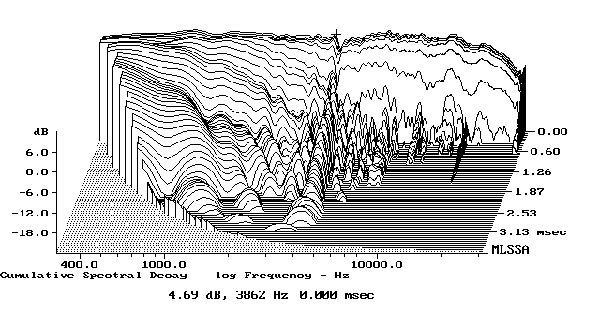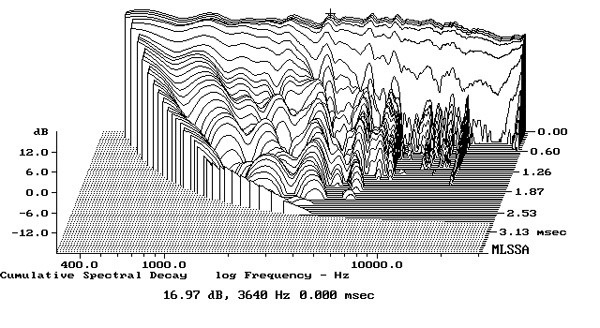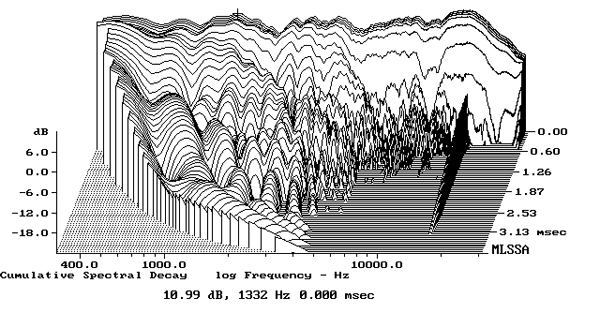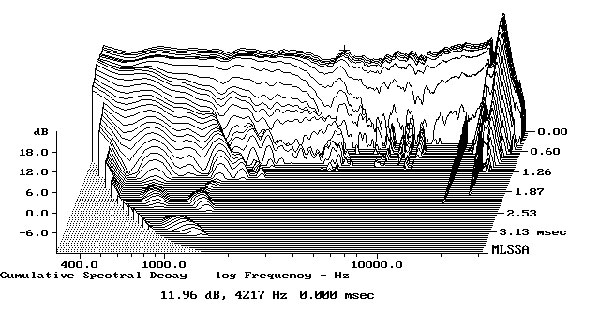Can you elaborate on this a little? I've heard this a number of times, including from our host, yet the waterfalls continue to be published as part of most comprehensive reviews. For the hobbyist like myself, they're very easy to understand but if I'm being mislead or not fully grasping their gaps then of course I'm probably worse off than simply not having them.
Anecdotally, I haven't been keeping a spreadsheet or anything, but most well-measuring speakers that come to mind show a very clean plot. Kef R3, Revel Performa and Be series are a few I can immediately think of.
I think the real problem is that the CSD is a 3-D plot and often hard to analyse from a single perspective. The physics involved means that they only really cover the top end of the range from around 1kHz on.
Here are a couple of examples of speaker CSDs from Stereophile. In both cases JA comments that they are 'clean':
Magico A5:
Estelon Forza:
Both show some ridges in the plot, but the decay is reasonably monotonic.
The
Dynaudio Confidence 30 is described as "clean, though some very low-level hash is present in the treble. I suspect that the apparent ridges of low-level decayed energy that can be seen in the upper midrange are due to early reflections of the midrange unit's output."
It appears that between 1-2kHz there's a dip or valley in the decay just past 1.26msec followed by a boost, in other words the decay isn't completely monotonic. This may be undesirable. This behaviour might be easier to see if we looked at the second derivative of the data.
In comparison to all these the
Focal Aria K2 936 looks almost perfect apart from the metal-dome tweeter resonance past 20kHz:
But ... does this mean anything? I'd be more worried about the slightly uneven lateral dispersion in this model.





 "special" effects.. Thanks for your worthless input.
"special" effects.. Thanks for your worthless input.